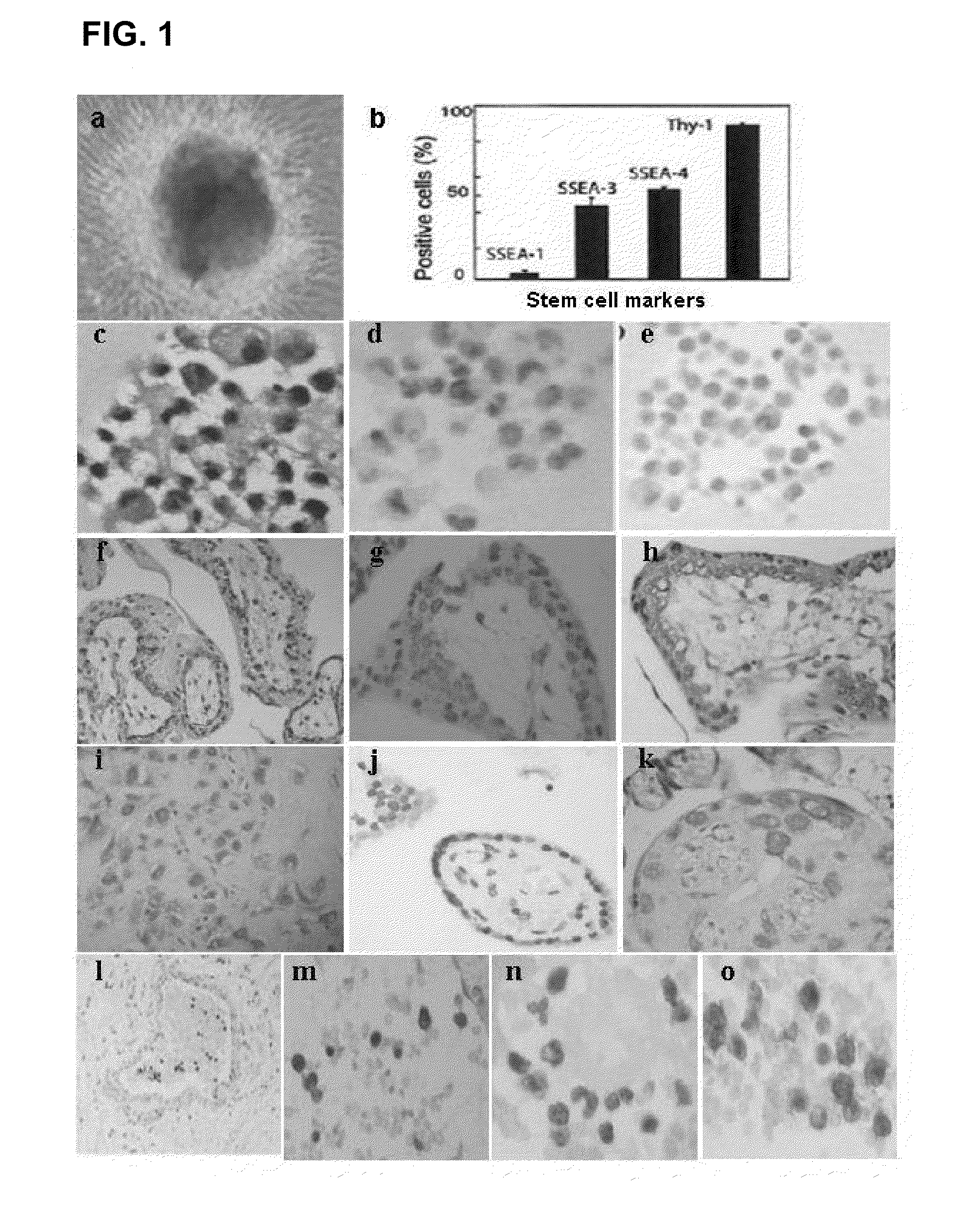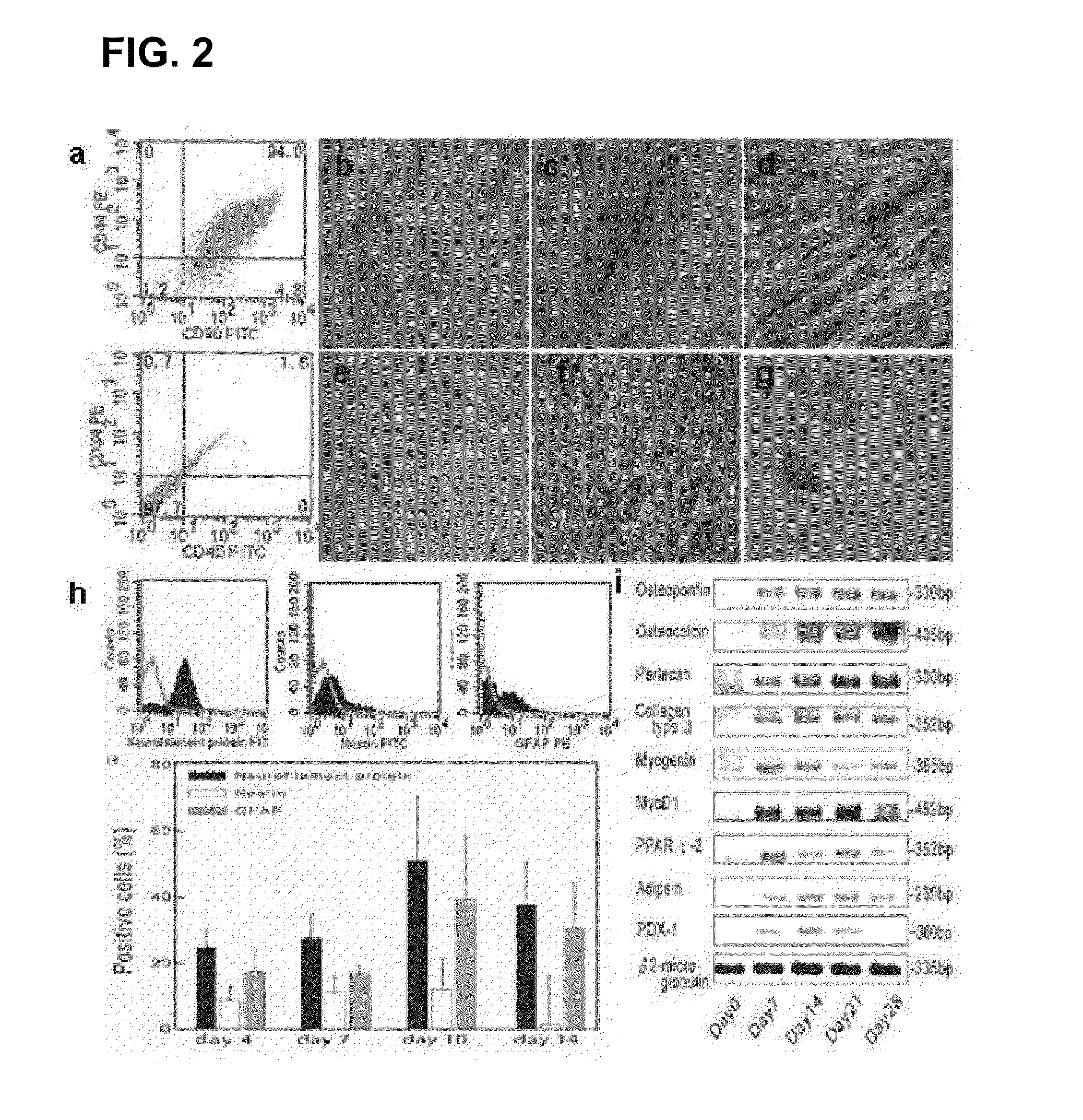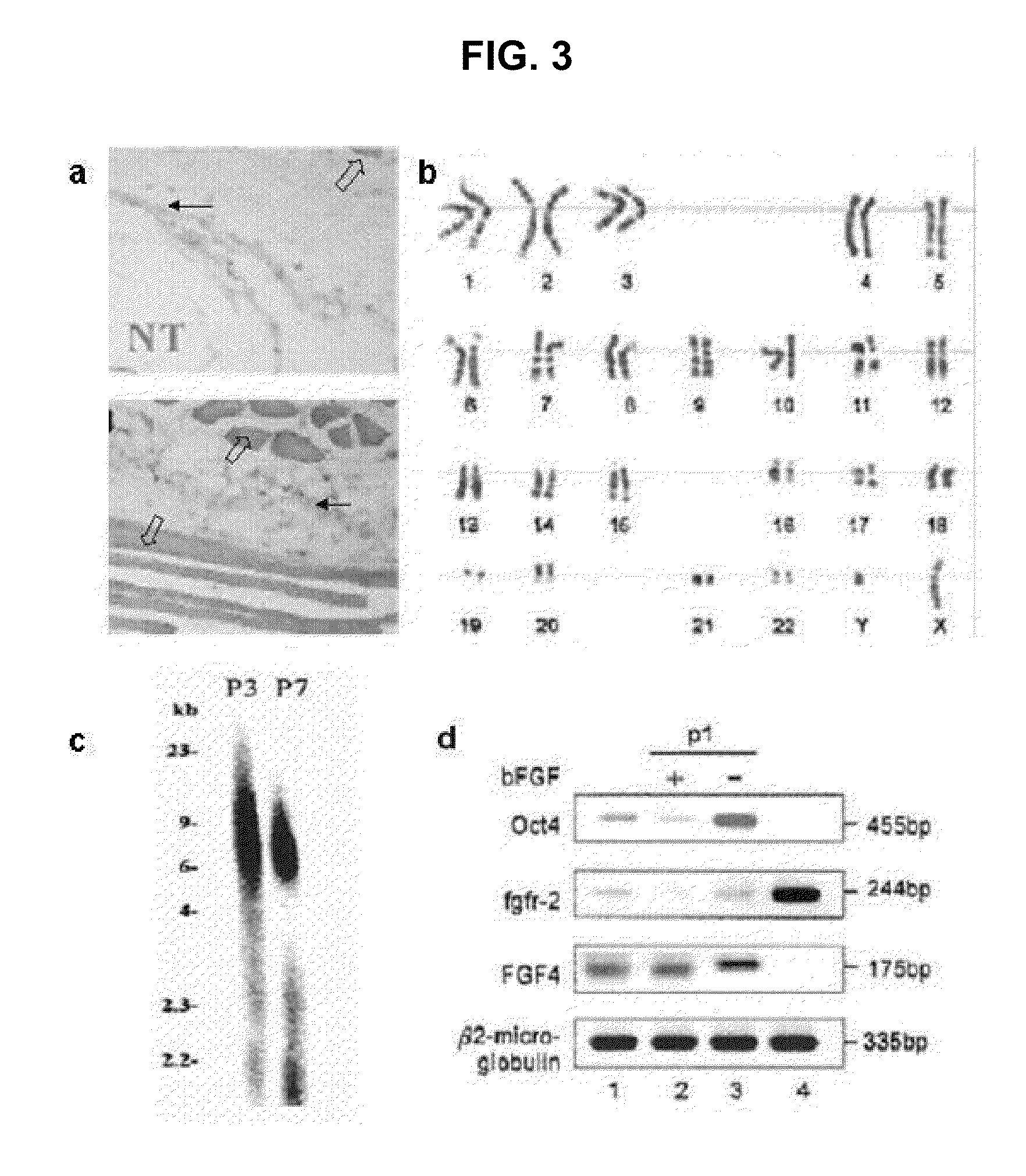Human trophoblast stem cells and use thereof
a technology stem cells, which is applied in the field of isolating preparation of human trophoblast stem cells, can solve problems such as loss or damage of dopaminergic neurons
- Summary
- Abstract
- Description
- Claims
- Application Information
AI Technical Summary
Benefits of technology
Problems solved by technology
Method used
Image
Examples
example 1
Primary Culture and Isolation of hTS Cells from Trophoblastic Villi
[0064]Using a laparoscopy, eight eligible samples (4-5 weeks post-fertilization) were obtained from the gynecologic unit (FIG. 10a). The samples were used for cell culture and for immunohistochemical study. Fresh villi (FIG. 10b) were mechanically dissected, washed, and cultured with medium in the absence of bFGF. Prior to differentiation, only few EBs appeared on day one of the culture (FIG. 1a). After a week, EBs count increased to 30-40 in number with identical morphological features described in previous studies (M. Amit et al., Dev. Biol., 227, 271, (2000); M. J. Shambloott et al., Proc. Natl. Acad. Sci. USA., 98, 113, (2001)).
[0065]Early trophoblastic villi were obtained from the unruptured tubal ectopic pregnant mass (gestational age: 6-7 weeks) (FIG. 10a) under laparoscopic surgery. Immediately, villous tissues were washed by normal saline (37° C.) to get rid of blood and dissected in serum free α-MEM medium ...
example 2
Immunocytochemical Study of Differentiated hTS Cells
[0069]At passage 6, cells were cultured as a monolayer in basal medium (α-MEM containing 20% FBS and 10 ng / ml bFGF) in 3.5 cm culture dishes. After cells grew to 70% in confluence, culture medium was changed for variable differentiations. The evaluations were made at day 7, 14, 21, and 28 after drug induction. For osteogenic differentiation, cells were grown in conditioned medium (Table 1).
Table 1 Recipes Used for Specific Cell Phenotype Differentiations of hTS Cells
[0070]
TABLE 1Recipes used for specific cell phenotype differentiations of hTS cellsDifferentiationsReagentsOsteogenesisα-MEM containing 20% FBS, 10 μg / ml bFGF,0.1 μM dexamethasone, 10 mM β-glycerolphosphate, and0.2 mM ascorbic acidChondrogenesisα-MEM containing 10% FBS, 1% antibiotic / antimycotic,6.25 μg / ml insulin, 10 ng / ml TGF-β1, and50 nM ascorbate-2-phosphateMyogenesisα-MEM containing 10% FBS, 10 μg / ml bFGF,0.1 mM dexamethasone, 50 mM hydrocortisone, and 5%horse seru...
example 3
RT-PCR
[0080]Extraction of total RNA from the hTS cells (105 to 106) at various passages of culture and term placental tissues was carried out using the TRIzol kit according to the manufacturer's instructions (Invitrogen, Carlsbad, Calif.). Reverse transcription was performed using 1 μg RT reactions were performed using Ready-to-Go, RT-PCR Beads kit (Amersham Biosciences, Buckinghamshire, UK). One .mu.g of total RNA was reverse transcribed to cDNA. The cDNA product, corresponding to 0.2 μg of total RNA, was used for PCR amplification. The primers used were shown in Table 2.
Table 2 Primer Sequences Used for RT-PCR
[0081]
TABLE 2Primer sequences used for RT-PCROsteopontin(5′-CTAGGCATCACCTGTGCCATACC-3′ forward and5′-CAGTGACCAGTTCATCAGATTCATC-3′ reverse)Osteocalcin(5′-CGCAGCCACCGACACACCAT-3′ forward and5′-GGGCAAGGGCAAGGGGAAGA-3′ reverse)Perlecan (PRLN)(5′-CATAGAGACCGTCACAGCAAG-3′ forward and5′-ATGAACACCACACTGACAACC-3′ reverse)Collagen typeII(5′-ACGGCGAGAAGGGAGAAGTTG-3′ forward and5′-GGGGGT...
PUM
| Property | Measurement | Unit |
|---|---|---|
| pH | aaaaa | aaaaa |
| temperature | aaaaa | aaaaa |
| pH | aaaaa | aaaaa |
Abstract
Description
Claims
Application Information
 Login to View More
Login to View More - R&D
- Intellectual Property
- Life Sciences
- Materials
- Tech Scout
- Unparalleled Data Quality
- Higher Quality Content
- 60% Fewer Hallucinations
Browse by: Latest US Patents, China's latest patents, Technical Efficacy Thesaurus, Application Domain, Technology Topic, Popular Technical Reports.
© 2025 PatSnap. All rights reserved.Legal|Privacy policy|Modern Slavery Act Transparency Statement|Sitemap|About US| Contact US: help@patsnap.com



